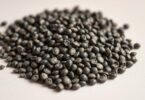Did you know 68% of pet owners have tried homemade supplements to boost their furry friend’s wellness? Among these, a nutrient-rich liquid has quietly gained popularity—and it’s not your average chicken soup. This guide dives into the science-backed details behind this trend to help you make informed choices.
Made by simmering animal bones for hours, this collagen-packed liquid offers vitamins and minerals that may support joint health, digestion, and hydration. Pet nutrition experts often recommend it as a gentle addition to meals, especially for aging or recovering companions. But like any dietary change, it requires careful preparation and moderation.
What makes this ingredient stand out? Unlike store-bought broths, homemade versions avoid additives like salt or onions, which can harm pets. The next sections break down how to safely prepare it, ideal serving sizes, and signs your four-legged friend might benefit most. You’ll also discover which bones work best and why quality sourcing matters.
Backed by veterinary insights and nutritional research, this article clarifies myths and highlights practical tips. Whether you’re curious about gut health improvements or seeking hydration solutions for picky eaters, the answers ahead will guide your decisions.
Understanding Bone Broth for Dogs
A simmering pot in the kitchen might hold more than just family meals—it could be a key to canine wellness. This nutrient-dense liquid, crafted through hours of gentle cooking, serves as more than a flavorful addition to meals.
What is Bone Broth?
Prepared by simmering animal bones for 12-24 hours, this liquid extracts collagen, amino acids, and minerals like calcium. Unlike store-bought versions for humans, pet-safe formulations exclude onions, garlic, and excessive sodium. The slow process breaks down connective tissues, releasing compounds that support joint function and digestion.
Nutritional Components and Safe Ingredients
Quality matters when selecting ingredients. Beef knuckles, chicken feet, and turkey necks provide rich collagen sources. Safe additions include carrots, parsley, and apple cider vinegar to enhance nutrient absorption.
Key components like glucosamine and chondroitin occur naturally during cooking. These elements promote cartilage health while aiding hydration in picky eaters. Always verify commercial products list veterinary-approved components without artificial preservatives.
Is Bone Broth Good for Dogs? Unpacking the Benefits
Nutrient-rich liquids have become a secret weapon for savvy dog owners focused on holistic care. When prepared correctly, these broths deliver targeted support across multiple bodily systems, offering more than just basic nutrition.
Joint Health, Gut Health, and Collagen Support
Collagen extracted during cooking acts as a building block for cartilage, easing stiffness in older pets. This natural compound supports mobility while reducing wear on joints. Simultaneously, gelatin forms a protective layer in the digestive tract, sealing gaps in the intestinal lining to address leaky gut concerns.
Amino acids like glycine play a dual role. They assist the liver in filtering toxins while promoting nutrient absorption. This makes the liquid particularly valuable for pets recovering from digestive upset or food sensitivities.
Boosting the Immune System and Hydration
Essential amino acids and antioxidants in the broth strengthen defenses against common pathogens. Anti-inflammatory properties further help manage conditions like allergies or arthritis flare-ups.
For picky eaters or dehydrated companions, this savory option encourages fluid intake. Its gentle formulation soothes irritated stomachs, making it ideal during recovery periods. Regular inclusion in meals—when portioned appropriately—can elevate overall vitality without overwhelming delicate systems.
Incorporating Bone Broth into Your Dog’s Diet
Choosing the right nutritional boost for your pet requires balancing convenience with quality. Both homemade and commercial options have distinct advantages, depending on your schedule and priorities.
Homemade vs. Dog-Specific Store-Bought Options
Homemade recipes let you control ingredients, ensuring no harmful additives. Use raw bones from chicken or beef, simmered for 18-24 hours. Avoid cooked bones—they splinter and pose choking risks.
Store-bought formulas save time and meet safety standards. Look for brands labeled “complete and balanced” by veterinary nutritionists. Check labels for low sodium and zero onion or garlic content.
Proper Serving Techniques and Portion Sizes
Start with 1-2 tablespoons daily for small breeds, up to ¼ cup for larger dogs. Mix it into kibble to enhance flavor or freeze into cubes as a summer treat.
Gradually increase portions if stools remain normal. Refrigerate homemade batches for 5 days or freeze in silicone molds. Always discard leftovers past their freshness window.
Potential Risks and Safe Feeding Practices
Safety starts with knowing what’s in your dog’s bowl. While nutrient-rich liquids can enhance meals, improper preparation or storage might undo their benefits. Vigilance with ingredients and handling ensures your companion reaps rewards without risks.
Identifying Unsafe Ingredients and Additives
Human-grade versions often contain hidden dangers. Onions, garlic, and excess salt—common in store-bought broths—can cause anemia or kidney strain. Always verify labels for pet-safe certifications.
Homemade batches require careful sourcing. Avoid cooked bones that splinter and skip spices like nutmeg. Stick to vet-approved vegetables like carrots or celery for added nutrition.
Storage Guidelines and Serving Suggestions
Freshness matters. Refrigerate unused portions in airtight containers for up to five days. Freeze leftovers in ice cube trays for portion-controlled treats lasting six months.
Strain liquids thoroughly to remove bone fragments before serving. Introduce small amounts gradually—½ ounce per 10 pounds of body weight daily—to monitor tolerance. Consult your veterinarian if introducing new foods alongside existing diets.
Bone Broth: Enhancing Overall Canine Health
Supporting a dog’s vitality requires more than just meals—it’s about the nutrients they absorb. This collagen-rich liquid acts as a multitasking supplement, addressing internal systems while promoting visible energy. Its benefits extend beyond temporary fixes, fostering resilience against age-related challenges.
Digestive Harmony and Internal Cleansing
Amino acids like glycine act as natural detoxifiers. They help the liver process toxins while supporting bile production. This dual action enhances nutrient absorption, allowing dogs to extract more value from their meals.
Essential minerals such as magnesium and potassium regulate nerve signals. These nutrients maintain muscle function and hydration balance. Combined with collagen’s gut-soothing properties, they create a foundation for long-term wellness.
Chronic inflammation often stems from poor digestion or nutrient gaps. Regular servings of bone broth deliver anti-inflammatory compounds that protect joints and organs. Over time, this strengthens resistance to arthritis and metabolic issues.
Think of this liquid as a nutritional amplifier rather than a standalone solution. Pair it with high-quality proteins and vegetables for balanced meals. When used strategically, it elevates a dog’s diet without replacing core components.
Expert Opinions and Vet Recommendations
What do experts say about incorporating traditional remedies into modern pet care? Veterinary perspectives help separate hype from science, offering clarity for owners navigating nutritional trends.
Insights from Veterinarians and Pet Nutritionists
Dr. Jerry Klein, Chief Veterinary Officer at the AKC, notes collagen-rich liquids like bone broth can “support cartilage repair in active or senior pets.” He advises pairing it with glucosamine supplements for maximum joint benefits. Nutritionist Irene Gunawan adds that amino acids in these broths strengthen skin barriers, reducing allergy-related itching.
For picky eaters, experts suggest warming broth to enhance aroma. Mixing 1-2 tablespoons into dry food often entices reluctant diners. Homemade versions using chicken feet or turkey necks provide natural gelatin without artificial flavors.
Commercial products require scrutiny. Look for certifications like NASC Quality Seal, ensuring formulations meet pet-specific safety standards. Avoid generic “human-grade” labels, which may hide harmful additives.
Multiple owners report shinier coats and improved mobility after 4-6 weeks of regular use. However, vets emphasize moderation—excessive portions might disrupt digestion. Always discuss dietary changes with your clinic, especially for pets with kidney issues or food sensitivities.
Wrapping Up Your Dog’s Bone Broth Journey
Enhancing your companion’s diet doesn’t require complex solutions. When prepared thoughtfully, bone broth offers a natural way to support joints, skin, and coat health while adding excitement to meals. This liquid supplement delivers hydration and nutrients in a form most pets eagerly consume.
Prioritize dog-specific products or homemade recipes using quality sources like chicken or beef. Proper storage—freezing in portions or refrigerating for short-term use—preserves freshness. Start with small amounts mixed into regular dog food, adjusting based on your pet’s size and needs.
Regular use may improve digestive comfort and mobility over time. Observe how your furry friend responds, and consult your veterinarian when introducing new foods. By focusing on safe practices and gradual integration, you’ll maximize benefits without compromising safety.
Whether used as a treat or mealtime enhancer, bone broth exemplifies how simple additions can elevate canine nutrition. Keep portions controlled, ingredients clean, and expectations realistic to create lasting wellness through everyday choices.
FAQ
Can bone broth improve my dog’s joint health?
Yes! The collagen and amino acids in bone broth support cartilage repair and reduce inflammation, which benefits aging dogs or breeds prone to joint issues like hip dysplasia. Always opt for low-sodium recipes to avoid excess salt.
Are store-bought bone broths safe for pets?
Some commercial broths contain harmful additives like onions, garlic, or high sodium levels. Look for dog-specific brands like The Honest Kitchen or Native Pet, which avoid toxic ingredients and prioritize pet-safe nutrition.
How often should I serve bone broth to my dog?
For small breeds, 1–2 tablespoons daily mixed into meals works well. Larger dogs can handle ¼–½ cup. Introduce it gradually to prevent digestive upset, especially for pets with sensitive stomachs.










Leave a Comment